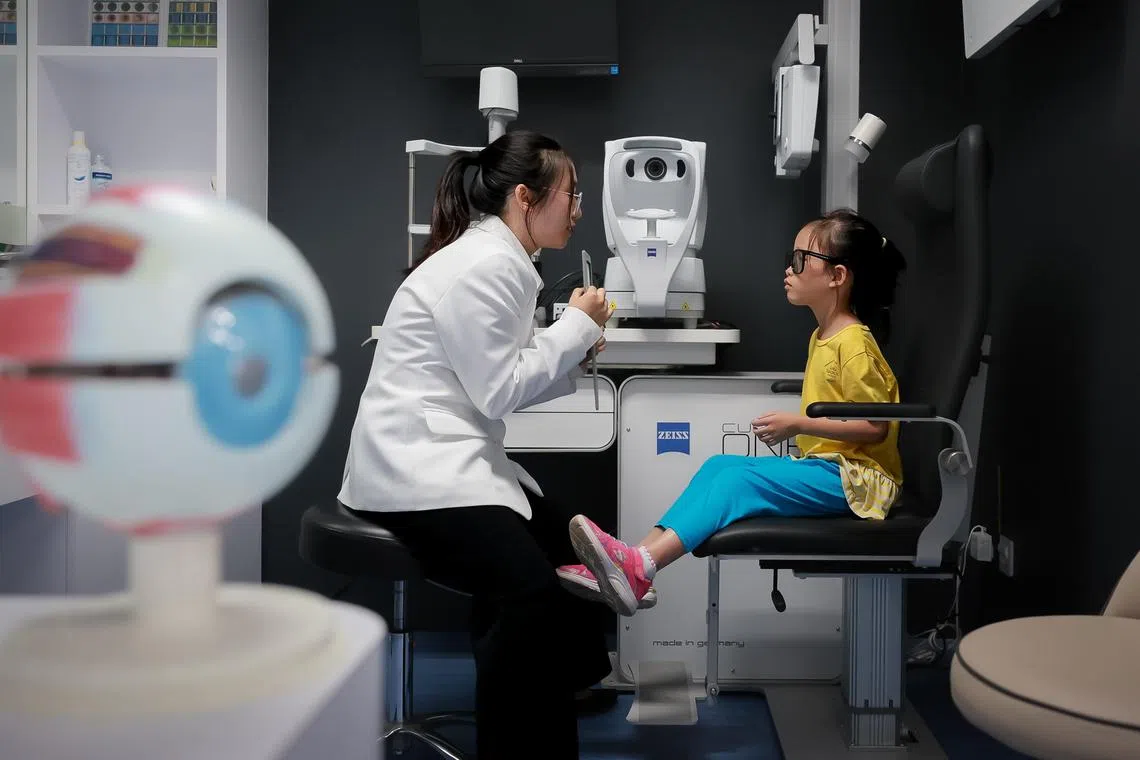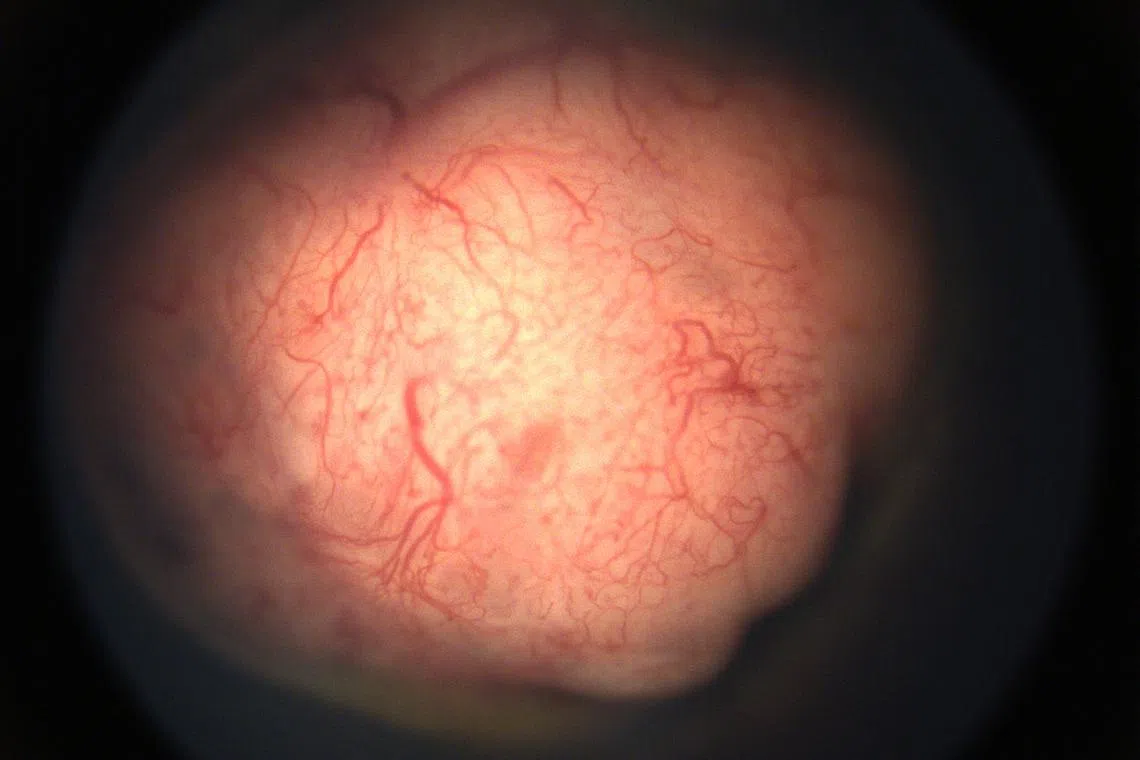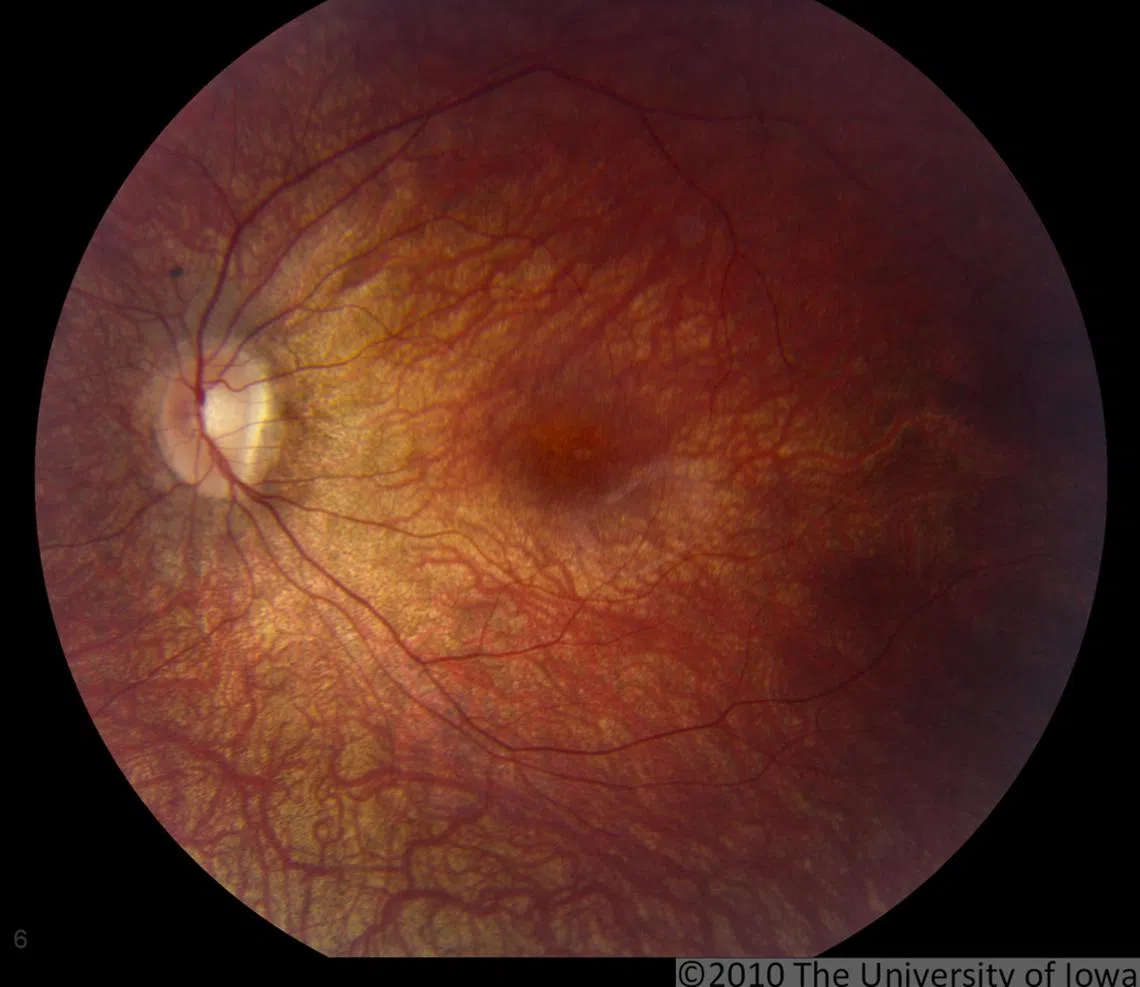ST takes a closer look at 4 rare eye diseases affecting children to mark World Sight Day
Sign up now: Get ST's newsletters delivered to your inbox

The 2024 World Sight Day focuses on children and calls for eye health services to be accessible, available and affordable for all kids.
ST PHOTO: GAVIN FOO
Follow topic:
SINGAPORE – World Sight Day, which fell on Oct 10, is marked around the world to promote eye care and raise awareness about eye conditions like blindness and vision impairment.
It falls on the second Thursday of October each year and is coordinated by the International Agency for the Prevention of Blindness.
This year’s campaign, called Love Your Eyes, focuses on children and calls for eye health services to be more accessible and affordable to all children.
Doctors whom The Straits Times spoke to highlight four rare eye diseases affecting children.
Retinoblastoma
Retinoblastoma is a kind of eye cancer caused by a genetic mutation in the cells of the retina, the light-sensitive layer of tissue at the back of the eyeball.
Dr Quah Boon Long, a senior consultant at the Singapore National Eye Centre (SNEC), said: “It can cause complete blindness, spread out of the eye and become lethal if not treated on time.”
A tell-tale sign of the disease is a white, glistening reflection in the pupil. Another sign is a constant squint – when the eyes are unable to look in the same direction.
The cancer can show up at birth or later in life, though it is most common among children under four years old and rarely affects older children.
This also means that children in the early stages of retinoblastoma are often too young to tell their parents that their vision is declining. For Dr Quah, that means many cases are already at an advanced stage when he sees them.
Adults have also been diagnosed with retinoblastoma, he said, “though this is extremely rare and may be a cancer recurrence in a previously dormant or regressed tumour”.

A retinoblastoma tumour growing in the eye.
PHOTO: SINGAPORE NATIONAL EYE CENTRE
Treatment can vary widely, depending on the severity of the cancer. Advanced cases may require surgically removing the affected eye.
If detected early, it is a curable condition, and options include chemotherapy, radiotherapy, or using lasers and cryolasers to remove the tumour.
Dr Quah said he has not seen an increase in cases in recent years, but SNEC still sees an average of about six cases a year, with the incidence at about one in 15,000 to 18,000 live births.
Retinal dystrophy
Retinal dystrophies are a group of rare, inherited conditions that result in decreased vision over time – sometimes, leading to complete blindness.
This happens when specific genetic mutations cause the gradual degeneration of the retina, said Dr Saadia Farooqui, a consultant at SNEC.
Clear indicators of retinal dystrophy include poor vision, night blindness and reduced peripheral vision.
“They do not get better over time,” Dr Farooqui said.
She added that most diagnoses occur in adults, but those who have the condition are usually born with it, and some can begin experiencing symptoms in childhood.
There are about 300 gene variations known to cause different forms of retinal dystrophy, but only the gene mutation for Leber congenital amaurosis has an available cure in Singapore.

An eye with Leber congenital smaurosis.
PHOTO: THE UNIVERSITY OF IOWA
This is an early form of retinal dystrophy and accounts for about 5 per cent of all retinal dystrophy cases. Children with this condition have poor sight with rapid and uncontrollable movement of the eyes.
The treatment, known as Luxturna, delivers a functional copy of the faulty gene into the retinal cells, which allows the production of the normal protein required for visual function, Dr Farooqui said.
She added that similar treatments for other groups of retinal dystrophy are still being developed.
Dr Farooqui said more cases have been identified in recent years due to the increased knowledge of the disease and availability of tests, particularly genetic testing.
“It is important to (use genetic testing) to identify the gene responsible for retinal dystrophy... This information will help to determine inheritance patterns and any associated systemic conditions.”
She added that one in 1,000 to 2,000 Singaporeans is affected by the condition and that SNEC is developing a database of all cases in the Republic.
Retinopathy of prematurity
Retinopathy of prematurity (ROP) occurs when a baby is born prematurely and the blood vessels of the retina are not fully developed, said Dr Yvonne Ling, an SNEC senior consultant.
She said: “These blood vessels tend to grow abnormally when exposed to a different oxygen level outside the mother’s womb.”
Signs of the condition include a white pupil, a drifting eye or functional disability, Dr Ling said, adding that early stages of the disease cannot be detected without a specialist dilating the pupil and looking inside.
If left untreated, the condition can lead to bleeding and retinal detachments, which end in low vision or even complete blindness.
Dr Ling said: “Before the 1960s, little was known about the cause and development of this disease and schools for the blind were filled with children who developed poor vision from this condition.
“Blindness had set in by the time it was detected in the child.”
While mild stages of ROP may resolve spontaneously without treatment, intervention for more severe cases can include medicated injections or surgery.
Even after treatment, children who have been diagnosed require long-term care as they are at risk of other conditions such as more severe myopia, cataracts and glaucoma, a group of eye diseases that can cause vision loss due to a damaged optic nerve.
Dr Ling said: “The more premature and lower the baby’s birth weight is, the higher the risk. Children born as multiple births, such as twins or triplets, are particularly vulnerable.”

The more premature and lower the baby’s birth weight is, the higher the risk for retinopathy of prematurity.
ST PHOTO: LIM YAOHUI
As obstetrics and neonatal care advance, doctors are also seeing smaller premature babies surviving after birth and more intense cases of ROP, she added.
But the overall rate of ROP blindness has declined drastically since weekly eye screening for premature babies was introduced in Singapore’s public hospitals in the 1980s.
“Together with other measures in the prevention of blindness in young children, there is such a significant drop in childhood blindness that the Singapore School for the Visually Handicapped no longer exists,” she said.
The Singapore School for the Visually Handicapped was set up in the 1950s and renamed Lighthouse School in 2007, when it began taking in deaf children.
“Although we cannot eradicate ROP, the number of those who proceed on to poor vision remains low,” Dr Ling said.
Cerebral Visual Impairment
Cerebral visual impairment (CVI) is an umbrella term for conditions where the loss of sight arises from an issue with the brain instead of the eyes.
Senior consultant ophthalmologist Leo Seo Wei, who runs her own practice, said: “The eyes may function normally, but the brain struggles to process what they see, leading to visual difficulties”.
The condition is seen in certain neurological developmental conditions and can be caused by complications from a premature birth, lack of oxygen, brain infections and genetic conditions.
Most common in children, particularly those born prematurely or with brain injuries, the condition can also occur in adults following strokes, head injuries or other neurological conditions.
Dr Leo said symptoms of CVI vary with each patient and range widely in severity based on the type and extent of brain damage, as well as the age of onset.
Some symptoms include blurred vision, decreased contrast sensitivity, blind spots, and difficulty in recognising objects, navigating environments or identifying faces.
Dr Leo said: “Some children may struggle with route finding or coordinating vision with movement. Paradoxically, some kids have difficulty seeing moving objects, while others may have impaired ability to see objects unless they are moving.”
While there is no cure, CVI rarely leads to complete blindness and can improve over time in some cases, especially with therapy and rehabilitation.
But with no standard diagnostic test, the condition can be difficult to identify.
“In the United States, fewer than 20 per cent of likely cases are diagnosed. Studies have shown that up to 70 per cent of kids with cerebral palsy have CVI,” Dr Leo said.
There are also no readily available figures on the number of CVI cases here, though Dr Leo said awareness of the condition has been growing worldwide, with Singapore hosting its first CVI day in September.
Dr Leo, who was part of the event, said it aims to “raise awareness among CVI professionals, teachers, therapists, patients, and caregivers about the condition”.
She said: “It is not so much the increase in cases per se, but it is the increased awareness that leads to more cases. Since attending courses on CVI over the last few years, I am diagnosing more cases.”


